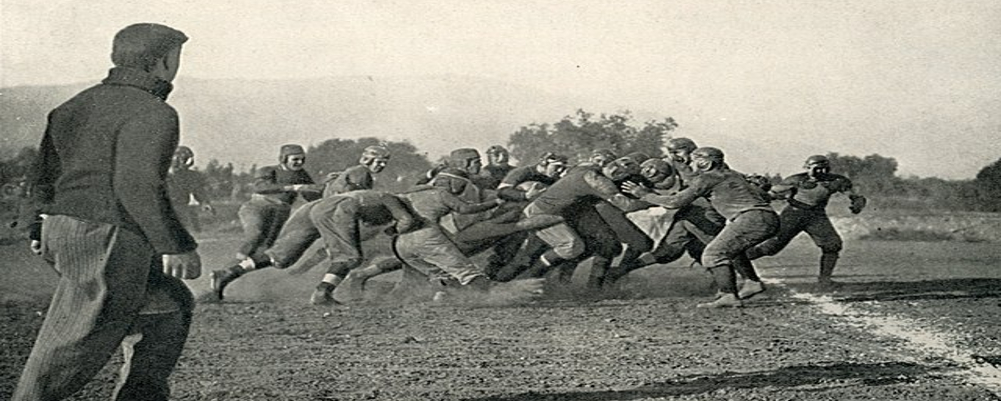Tennessee Volunteers football team was a dominant force in college football, finishing the 1940 season with a 10-1 record and claiming the Southeastern Conference (SEC) championship. Led by the legendary coach Robert Neyland, the Vols boasted a potent offense and a stingy defense, earning them recognition as one of the top teams in the nation.
The Vols marched through their regular season schedule without a single blemish, outscoring their opponents by a staggering margin of 332 to 45. This included victories over rivals Alabama (27-7) and Georgia (14-0).
The Vols' offense was well-oiled, averaging over 30 points per game and featuring several talented playmakers. Notable players included:
✦ Bob Suffridge: A unanimous All-America selection at guard, Suffridge anchored the offensive line and paved the way for the Vols' running attack.
✦ Johnny Majors: A sophomore quarterback who would become a college football legend, Majors led the Vols' passing game and contributed to their offensive success.
✦ Dizzy Dean Hobbs: A versatile back who could run, pass, and catch, Hobbs was a threat to opposing defenses every time he touched the ball.
Defensive Stalwarts: The Vols' defense was equally impressive, allowing only 4.1 points per game and shutting out four opponents. Key players included:
Bill Brennan: A hard-hitting linebacker, Brennan led the team in tackles and was a force to be reckoned with in the middle of the defense.
John Micheloson: A talented defensive end, Micheloson was a disruptive force on the pass rush and contributed to the Vols' overall defensive dominance.
The 1940 Boston College Eagles football team was one of the surprise teams in college football that season. They finished the regular season undefeated (11-0) and were widely considered the national champion, although the final Associated Press poll ranked them fifth. The Eagles were led by head coach Frank Leahy, who was in his second year at the helm and played their home games at Fenway Park in Boston and Alumni Field in Chestnut Hill, Massachusetts.
The team's star player was fullback Mike Holovak, who won the Heisman Trophy and was later inducted into the College Football Hall of Fame. Other key players included quarterback Paul Doherty, halfback Jack Moir, and end Al Coup.
The Eagles' most famous victory came in the 1941 Sugar Bowl when they defeated the previously unbeaten Tennessee Volunteers 19-13. This victory cemented the Eagles' claim to the national championship. However, some sportswriters argue that Minnesota, which finished the season ranked No. 1 in the AP poll, should be considered the true champion.
Big Ten Battle
The Big Ten conference had two dominant teams: Michigan and Minnesota.
The 1940 Michigan Wolverines football team dominated college football, finishing the season with a 7-1 record and ranking No. 3 in the final AP Poll.
Here are some of the highlights of their season:
Led by third-year head coach Fritz Crisler, the Wolverines boasted a potent offense that outscored opponents 196 to 34.
The team's offensive attack was led by quarterback Tom Harmon, who won the Heisman Trophy after throwing 1,177 yards and 13 touchdowns and rushing for 244 yards and four touchdowns.
Heisman Trophy:
The "Golden Boy" of the year was Tom Harmon of Michigan. He won the Heisman Trophy and the Maxwell Award, dazzling fans with his running and passing skills. Harmon formed a potent trio with quarterback Forest Evashevski and fullback Bob Westfall, making Michigan a feared offensive force.
1940 Minnesota Golden Gophers football team was a dominant force, going undefeated (8-0) and capturing the national championship title. Led by the legendary coach Bernie Bierman, who was in his ninth year at the helm, the Gophers were well-oiled machines, outscoring their opponents by a convincing margin of 154 to 71.
One of the team's key strengths was its potent running attack, spearheaded by the dynamic duo of George Franck and Bruce Smith. Together, they accounted for over 60% of the Gophers' touchdowns, showcasing their exceptional speed and agility on the gridiron. Franck even finished third in Heisman Trophy voting, a testament to his brilliance.
The Gophers' defense was equally impressive, holding their opponents to a mere 8.9 points per game. All-American tackle Urban Odson anchored the defensive line, while quarterback Bob Paffrath orchestrated the offense with precision and efficiency, earning him the team MVP award.
Ah, the 1940 Minnesota Golden Gophers' victory over the Michigan Wolverines was a game etched in college football history as a thrilling nail-biter and a turning point in the season. Here's the story:
Setting the Stage:
Date: November 9, 1940
Location: Memorial Stadium, Minneapolis, Minnesota
Weather: A muddy, rain-soaked field
Teams:
Minnesota Golden Gophers:
Undefeated powerhouse, ranked #2 in the AP Poll, coached by legendary Bernie Bierman.Michigan Wolverines: Also undefeated, ranked #3 in the AP Poll, boasting the "point-a-minute" offense led by Tom Harmon.
The Game:
It was a brutal defensive battle in the mud, with both offenses needing help finding a rhythm. Michigan scored a touchdown, but the extra point attempt was missed, leaving the Wolverines leading 6-0.
Minnesota's Bruce Smith (nicknamed "Biggie") broke free for an 80-yard touchdown run in the second half, electrifying the home crowd.
Joe Mernik calmly converted the extra point, giving Minnesota the narrow lead of 7-6.
The game remained tense until the final whistle, with Minnesota holding on for the dramatic victory.
The Gophers then faced a tough Nebraska Cornhusker team. Despite missed opportunities, Minnesota edged out Nebraska with a final score of 13-7. Here's a rewrite of the provided text incorporating some key details:
Minnesota established early control, marching down the field on their opening drive. However, after reaching the Nebraska 15-yard line, they unfortunately missed a field goal, leaving points on the board. Despite this setback, the Golden Gophers' defense held firm, keeping Nebraska scoreless in the first half.
The second half saw a shift in momentum. Nebraska came out firing, tossing a 48-yard pass and a 7-yard touchdown pass to tie the game at 7-7. This sudden surge put pressure on Minnesota to respond.
Minnesota quarterback Bruce Smith stepped up in the crucial fourth quarter. He launched a spectacular 41-yard touchdown pass to receiver William Johnson, putting the Golden Gophers back in the lead at 13-7.
The third game in a row for Minnesota's gauntlet of a schedule was against rival Ohio State. Minnesota owed everything to Bruce Smith, who carved up the Buckeyes for 139 yards and both touchdowns. He opened the scoring with a 10-yard jaunt after a fake pass, but his missed extra point kept it a nervous 6-0. Ohio State threatened, reaching the 1-yard line, only to be turned away.
A classic gridiron duel unfolded as Bruce Smith's 139-yard, two-touchdown show traded blows with Ohio State's grit. His 10-yard fake-pass TD, however, was marred by a missed PAT, leaving the Gophers clinging to a 6-0 lead. The Buckeyes stormed back, reaching the 1-yard line before Minnesota's defense stood firm. A fumble soon after gave Ohio State a golden opportunity, which they converted with a fourth-down lateral and touchdown pass to grab a 7-6 lead. But Smith wasn't done, ripping off two electrifying 23-yard runs to set up his second touchdown and ultimately secure a 13-7 victory.
Another team that had some strong contention for being the top team in 1940 was Stanford. The 1940 Stanford Indians football team, also known as the "Wow Boys," is a true gem in college football history. Let's dive into their remarkable season:
Dominating with the "T" Formation:
Led by innovative first-year head coach Clark Shaughnessy, the Indians revolutionized the game using the T formation. This offensive scheme, considered outdated then, emphasized speed, deception, and ball distribution, leaving defenses needing clarification.
The season was packed with thrilling moments. Stanford's narrow escape against USC, dubbed the "Thrilling Thursday" game, stands out. With seconds remaining, they pulled off a last-minute field goal to secure a 13-10 victory.
Another highlight was the Indians dismantling rival California in the Big Game. Stanford's 41-0 shutout cemented their dominance and sent shockwaves through college football.
Champions:
Officially: The Associated Press (AP) crowned Minnesota national champions after their undefeated season (8-0-1). They were ranked #1 in the final AP poll.
Unofficially, The Dunkel System, another popular ranking system at the time, awarded the title to Tennessee. The Volunteers finished the regular season 10-0, but a Sugar Bowl loss to Boston College tarnished their record.
Minnesota: AP Poll, National Championship Foundation, CFB Researchers
Stanford: Helms


